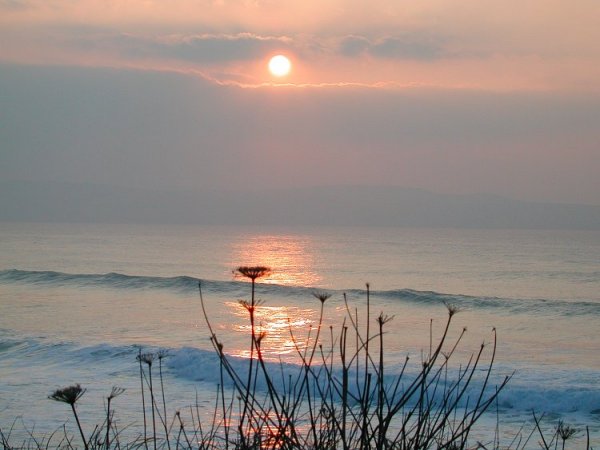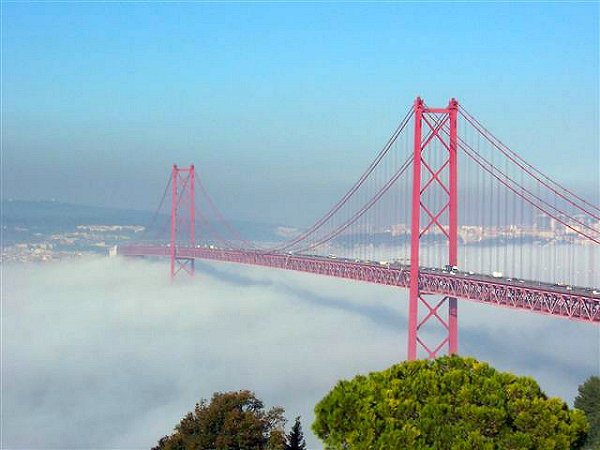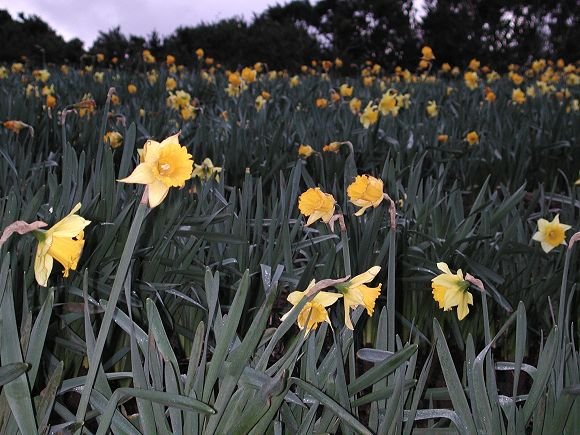THE BASICS
The Use of Focus
OK, so you have a digital camera with a fixed lens and no ability to zoom, plus you have no control over the aperture or the focus, and now you ask me, "Why on earth should I worry about focus?". Quite right, at the moment you may not be able to influence how your camera focuses, but are you going to stick to the same camera? I think not; so when you upgrade to one that gives you more than just the auto mode, you will at least be able to do something with what follows here! If, on the other hand, you already have a camera that allows you to control the focus in some way or other, you can get stuck into using focus right away!
There are people who think that when you take a landscape photograph, it is best to have everything from the very closest object to the very furthest in sharp focus. Most of the time that's fine, yes, but there are times when you can get a better effect by not following this rule of thumb. (Remember, rules are made to be broken -- intelligently.) Let's have a look at an example (this one by Charles Winpenny):

In this case the plants in the foreground add a sense of depth to the image. If the plants had been in sharp focus, they would have become a distracting element in the composition.
This effect we get when some parts of the image are in sharper focus than others is called "differential focus" and it goes hand in hand with depth of field. To understand depth of field, and why it works the way it does, we need to remember that the amount of light reaching the film -- or the CCD in the case of digital cameras -- is determined by two things working in tandem: the aperture (measured in f-stops) and the shutter speed, (measured in fractions of a second). So, for example, an exposure at f16 and 1/60 of a second allows x amount of light to reach the film. Now f16 is a rather small opening for a lens, and it allows us to get a greater depth of focus, so that anything say between 3 metres from the lens up to infinity is in sharp focus. If we open the lens up wider, to say f8, we allow more light in, and that would mean that the shutter would only be open for say 1/125th of a second. But now we may find that, if we focus on an object 4 metres from the lens, only that which lies between 3 and 10m are in focus. Go down a few more f-stops to f4 (and 1/250th of a second), and only objects between say 2.5 and 4.5m may be in focus.
Look at the following photograph taken on a misty morning in Lisbon:

Notice how the foliage in the foreground is in focus, and even the nearest of the bridge piers, but beyond that things become "softer" (less in focus)? This would indicate that the photograph was taken with a fairly large aperture (say f4.5). If the photographer (a Mr Anonymous) had used an aperture of f16 or higher, everything would have been in sharp focus... BUT then we would have lost the atmosphere of the image!
Have a look at Charles Winpenny's image of daffodils below:

In this case the use of flash assists the shallow depth of field to create a great sense of depth to the shot. When everything is in pin-sharp focus, things can end up looking very flat!
Of course, when we photograph anything close by, using our camera's macro (close-up) mode, we almost invariably get a shallower depth of field, as in this image

Here we want the background
to be out of focus.
Now you have to go and play around with your camera and its manual. See
what control you can manage to wrest from the machine when it comes to
focus, and play around a bit. By all means mail me you efforts if you want
to brag (and so you should, good grief!) or bemoan your lot, should you
have a battle.
NEXT